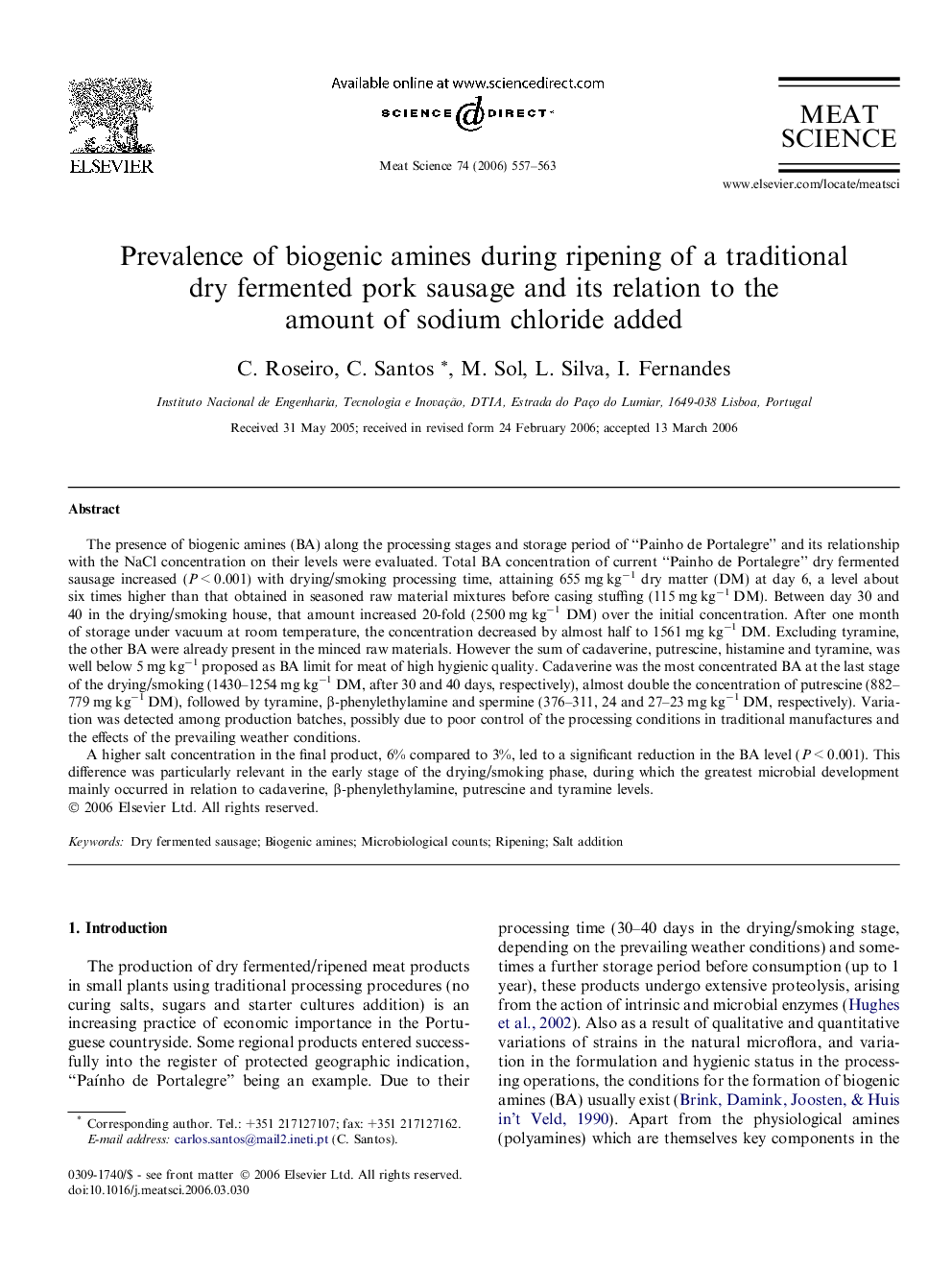| کد مقاله | کد نشریه | سال انتشار | مقاله انگلیسی | نسخه تمام متن |
|---|---|---|---|---|
| 2451970 | 1109701 | 2006 | 7 صفحه PDF | دانلود رایگان |

The presence of biogenic amines (BA) along the processing stages and storage period of “Painho de Portalegre” and its relationship with the NaCl concentration on their levels were evaluated. Total BA concentration of current “Painho de Portalegre” dry fermented sausage increased (P < 0.001) with drying/smoking processing time, attaining 655 mg kg−1 dry matter (DM) at day 6, a level about six times higher than that obtained in seasoned raw material mixtures before casing stuffing (115 mg kg−1 DM). Between day 30 and 40 in the drying/smoking house, that amount increased 20-fold (2500 mg kg−1 DM) over the initial concentration. After one month of storage under vacuum at room temperature, the concentration decreased by almost half to 1561 mg kg−1 DM. Excluding tyramine, the other BA were already present in the minced raw materials. However the sum of cadaverine, putrescine, histamine and tyramine, was well below 5 mg kg−1 proposed as BA limit for meat of high hygienic quality. Cadaverine was the most concentrated BA at the last stage of the drying/smoking (1430–1254 mg kg−1 DM, after 30 and 40 days, respectively), almost double the concentration of putrescine (882–779 mg kg−1 DM), followed by tyramine, β-phenylethylamine and spermine (376–311, 24 and 27–23 mg kg−1 DM, respectively). Variation was detected among production batches, possibly due to poor control of the processing conditions in traditional manufactures and the effects of the prevailing weather conditions.A higher salt concentration in the final product, 6% compared to 3%, led to a significant reduction in the BA level (P < 0.001). This difference was particularly relevant in the early stage of the drying/smoking phase, during which the greatest microbial development mainly occurred in relation to cadaverine, β-phenylethylamine, putrescine and tyramine levels.
Journal: Meat Science - Volume 74, Issue 3, November 2006, Pages 557–563